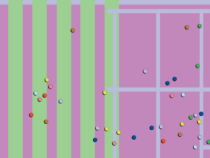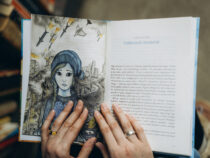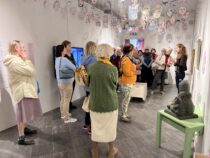Moving out, moving up, becoming employed
3rd of April at 5 pm takes place a discussion event about segregation of immigrants in Sweden.
Conversation is led by the curator of the exhibition “Stories of Belonging. Contemporary Art from Sweden” Hanna-Liis Kont and Ph.D. student Kati Kadarik.
Kati Kadarik talks about her Ph.D. thesis: “Is residential segregation hindering integration and threatening the social cohesion of European societies as depicted in the dominating European discourse? Or might it have positive effects such as providing ethnic minorities with access to social capital embedded in ethnic communities? This thesis analyses in a context-sensitive way whether the relationship between residential segregation and social integration is in line with political priorities to create socially and spatially integrative cities.
This research adds to the existing knowledge by problematizing the way we delineate neighborhoods and by emphasizing the importance of different contexts and foreign backgrounds. The thesis concludes that the relationship between residential segregation and social integration is complex and nuanced: it varies between groups with different backgrounds, but also by settlement contexts within Sweden and neighborhood contexts within cities, it changes over time, and is impacted by the spatial scale of neighborhood context measurements,”.
Hanna-Liis Kont will give a short introduction to the exhibition and after that Kati Kadarik will talk about social integration of immigrants in Sweden. After that everybody is welcome to join the conversation.
About the exhibition
Sweden is known as a country that invests heavily in the welfare and equality of its people. The country has also had a very open immigration policy and has accepted a large number of refugees in the recent past (peaking in 2015). Despite this, people with foreign backgrounds or different ways of life have to daily face such problems as difficulties in adaptation, exclusion, discrimination etc. These problems are also important to many artists. Through their works, they express their emotions or personal experiences and try to raise awareness of the situation of minority groups and those who are excluded.
Even though this is an exhibition of Swedish art, the participating artists have very different backgrounds, including being immigrants, artists born in Sweden as children of immigrant parents and being from families who have been Swedish citizens for generations. “As curators, we faced the dilemma of whom to count as Swedish artists in a multicultural society. We decided to focus on locality or on being active in Swedish contemporary art life and not on birth country or citizenship,” the curators explained.
To take part in the discussion event please purchase a ticket to the exhibition (4 €). The event takes place on Tartmus II floor.
The event is in English.




